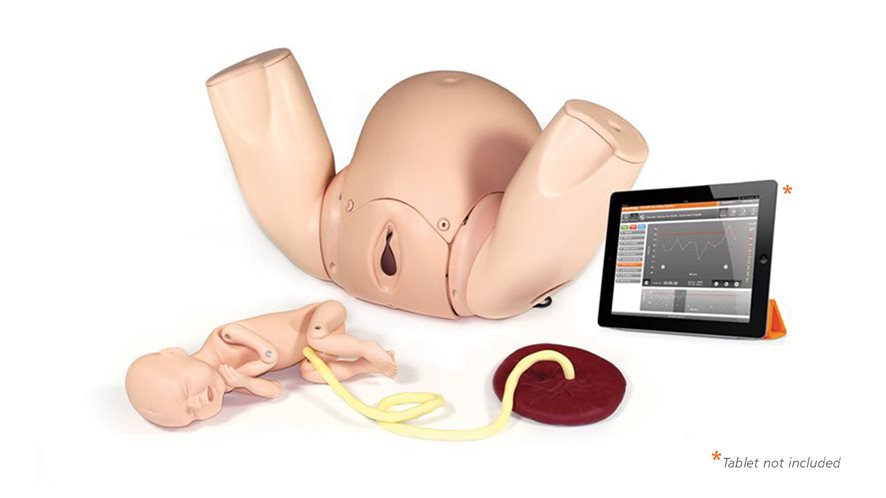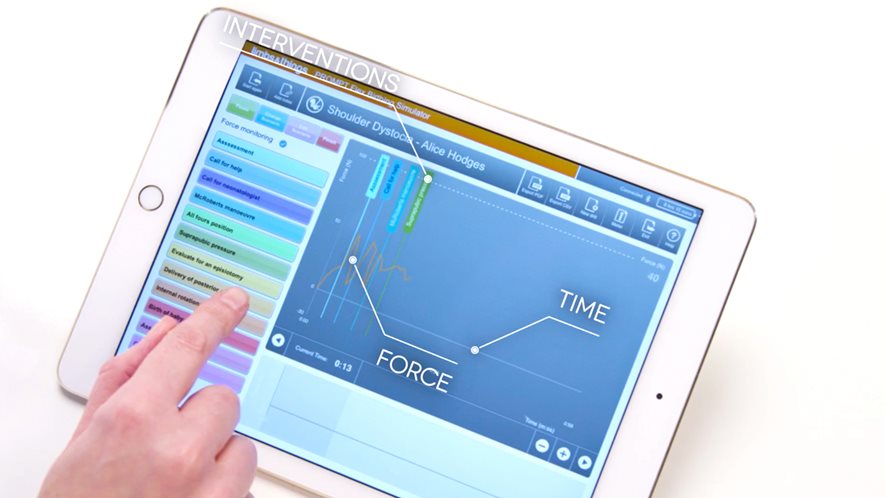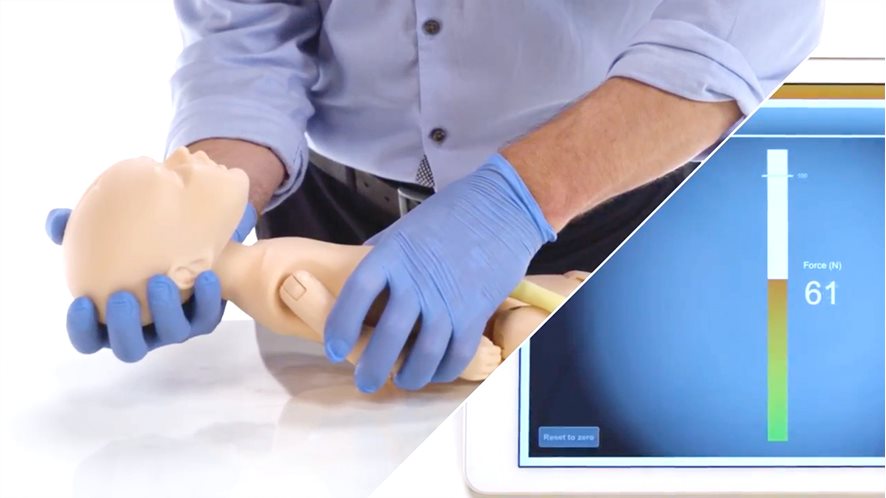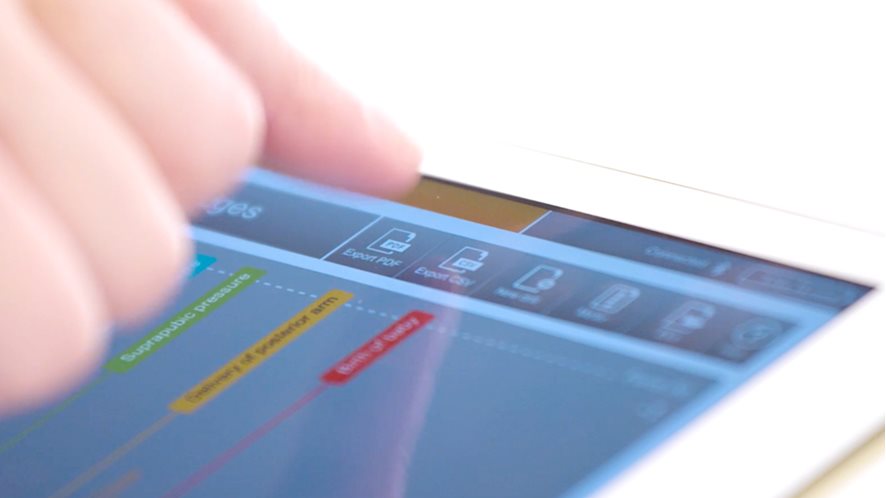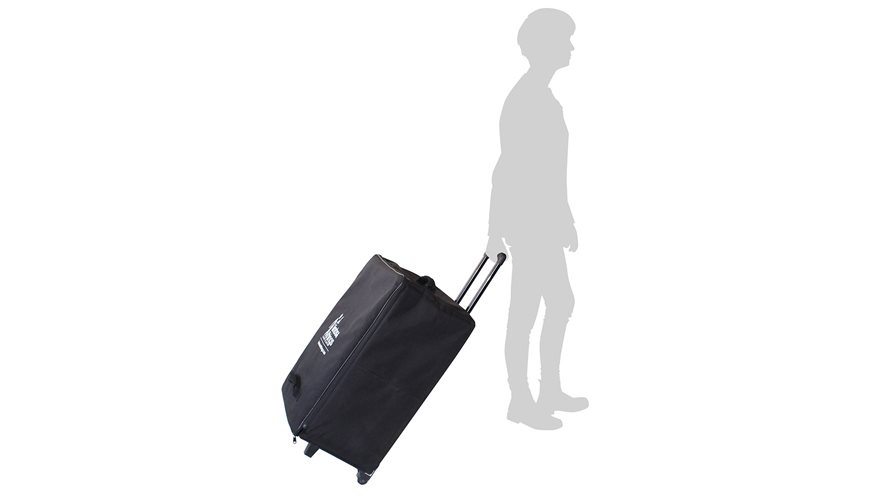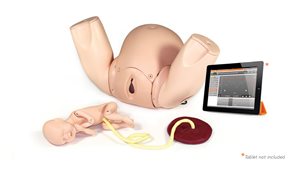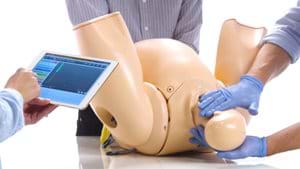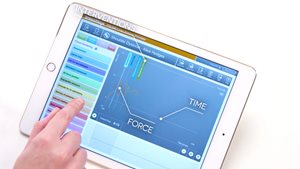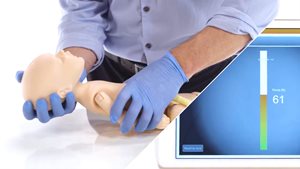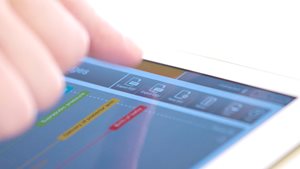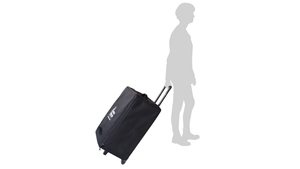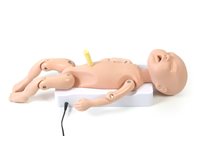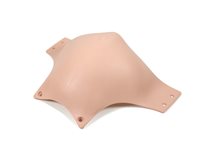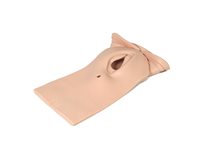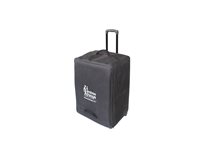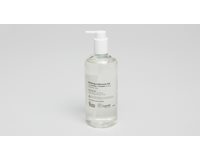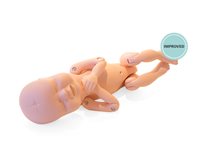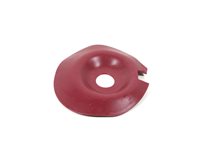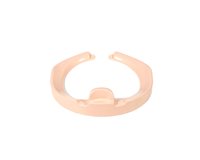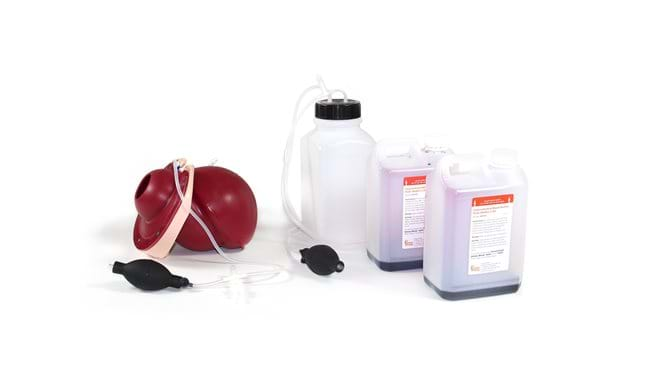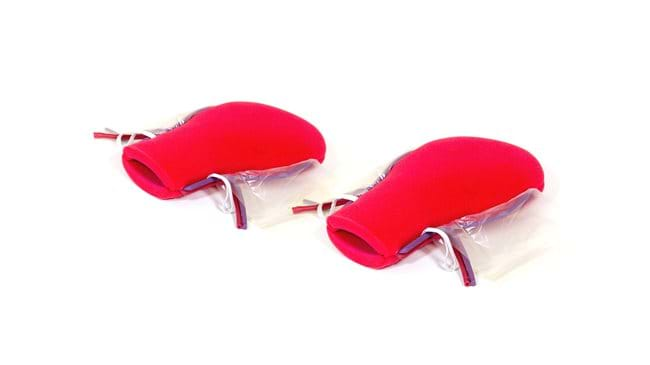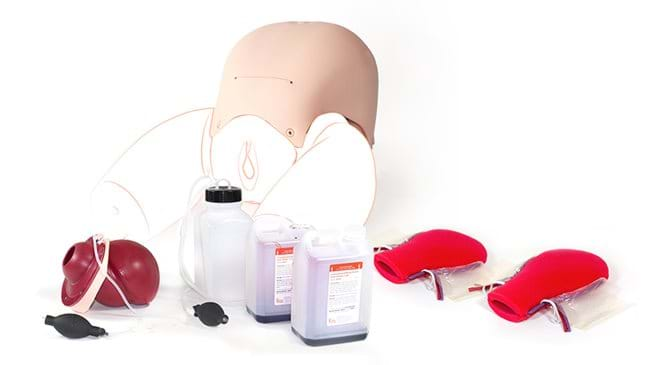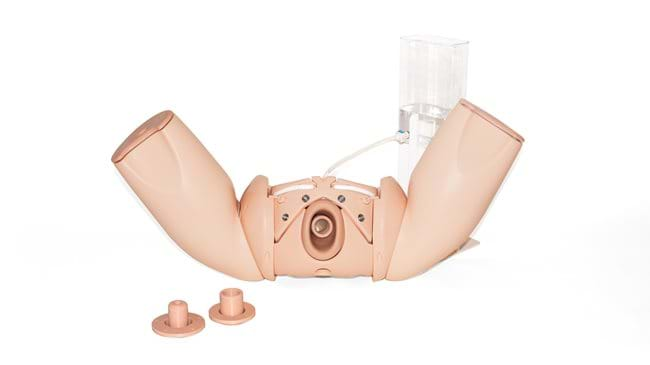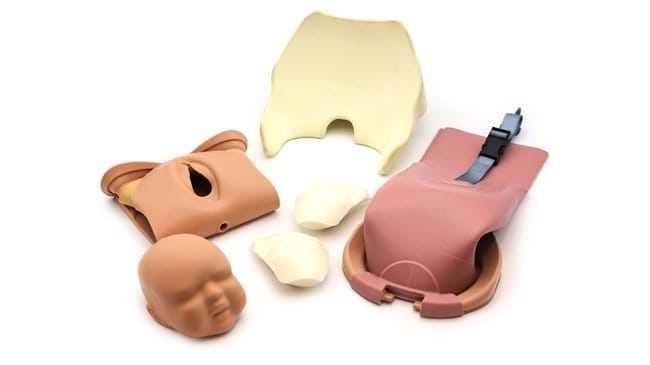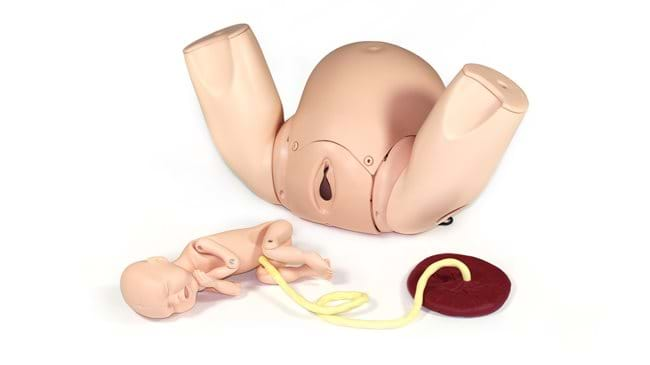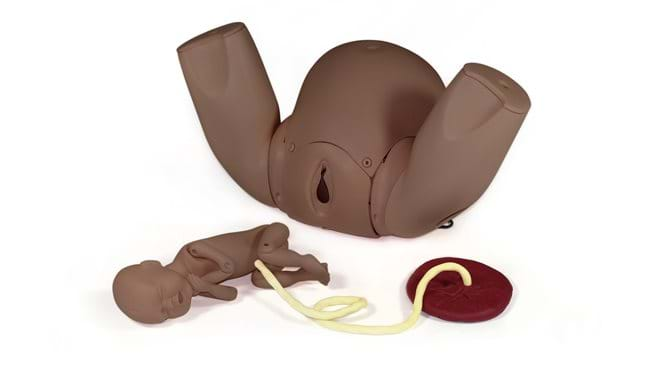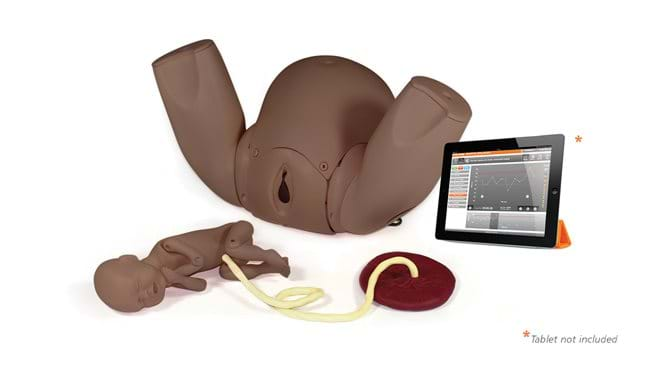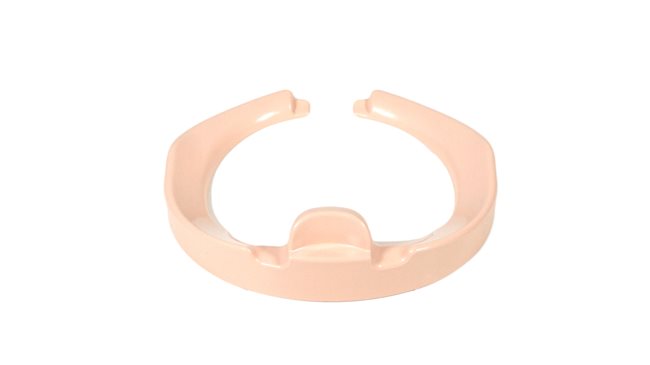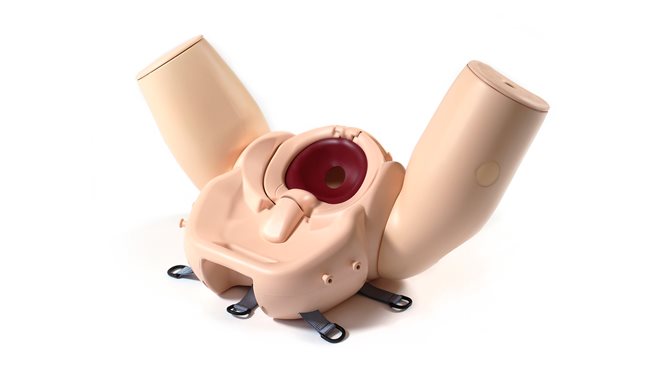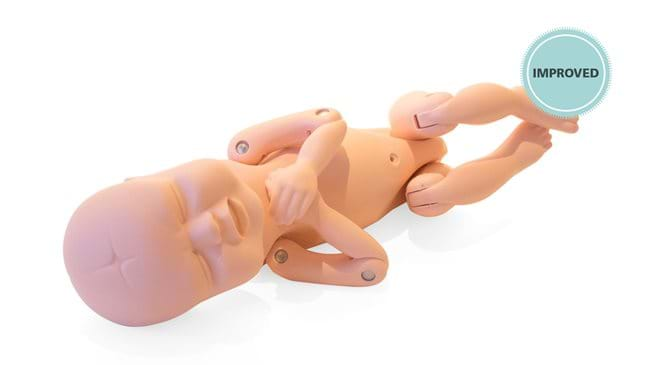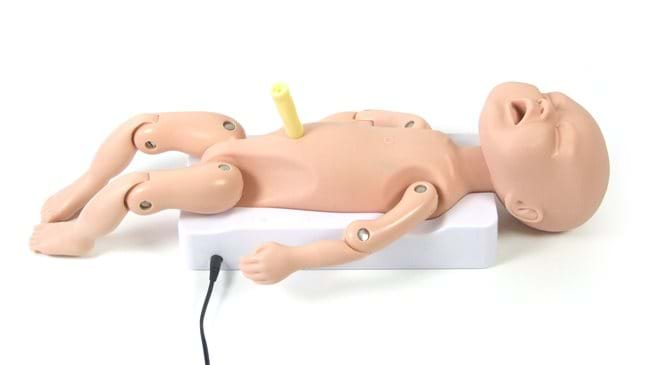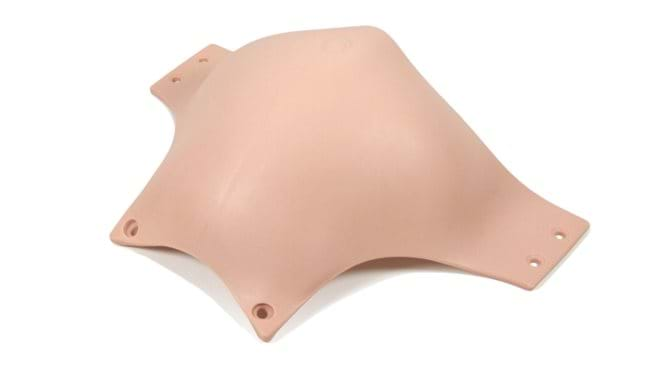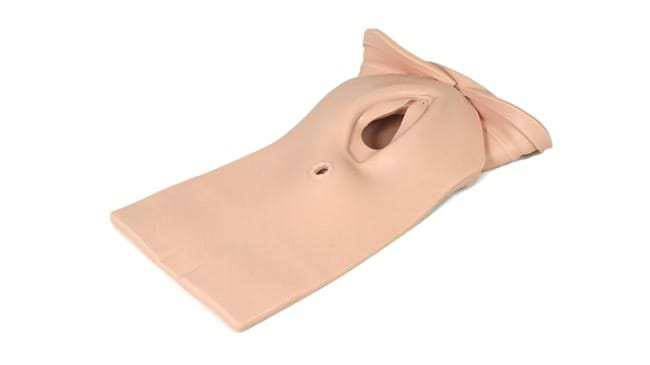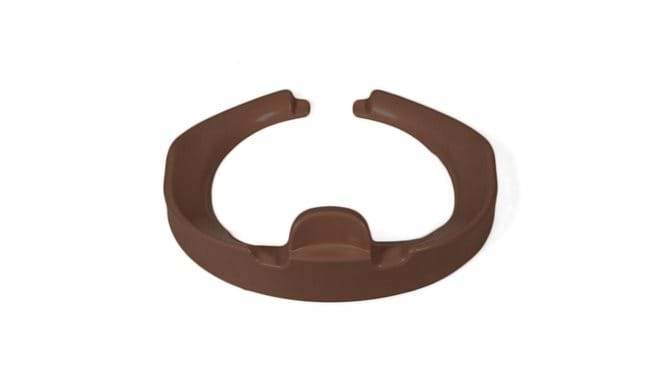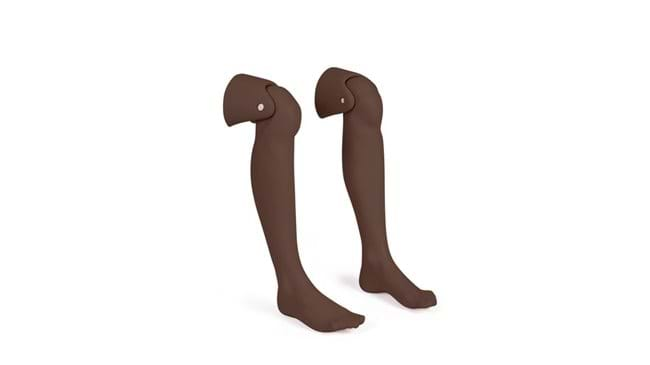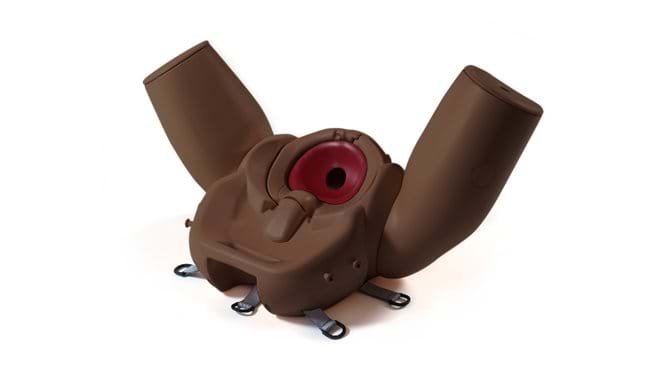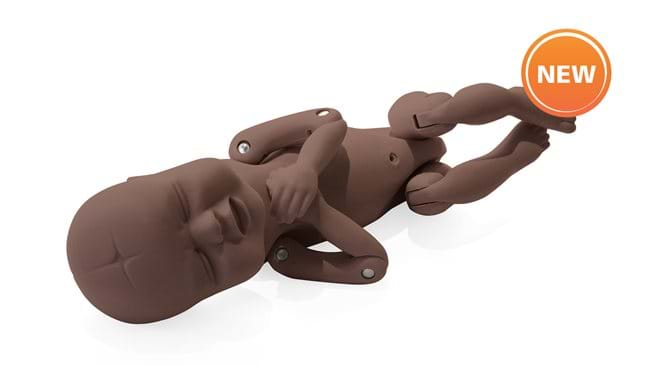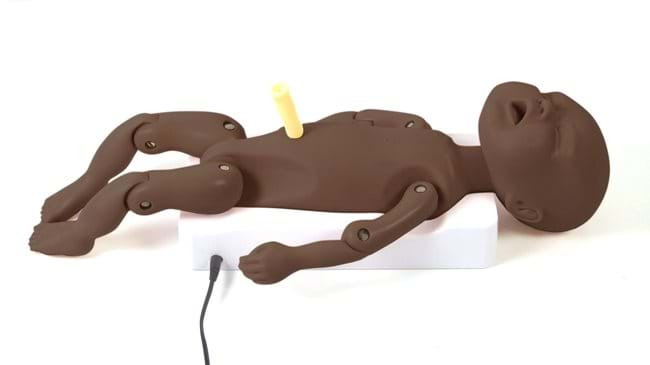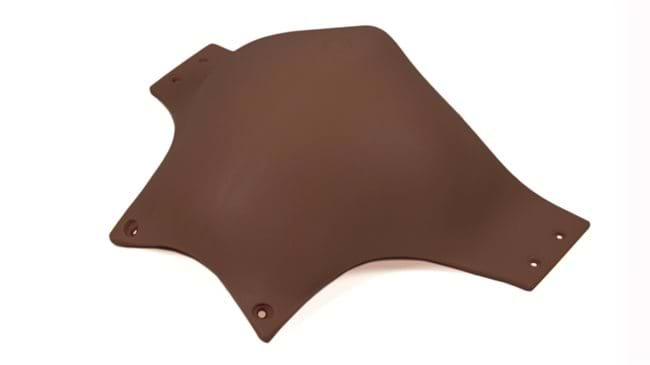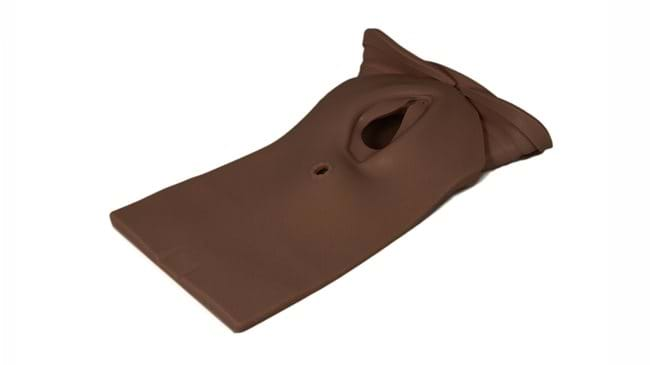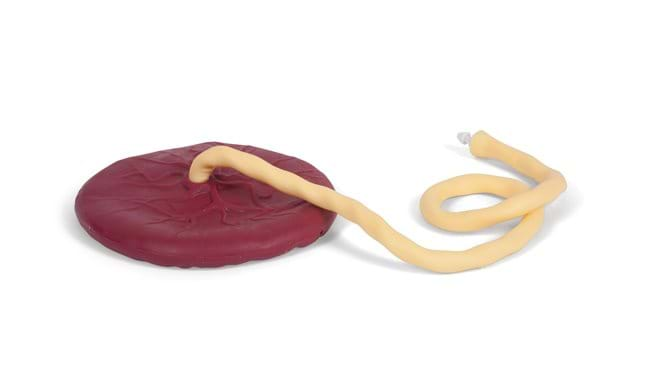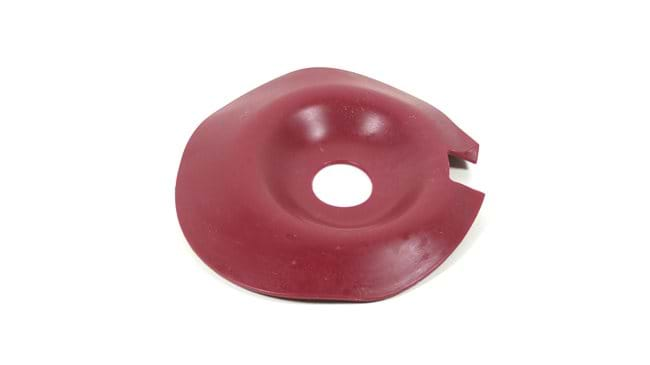Birthing Simulator PROMPT Flex - Advanced (Light Skin Tone)
NEW! Augmented Reality has come to the PROMPT Flex Birthing Simulator: Combine the PROMPT Flex trainer, ART Mat and FREE ART app, for a dynamic experience of overlaid anatomy and captivating procedural animations, including spontaneous vaginal birth, breech Mauriceau-Smellie-Veit manoeuvre, and shoulder dystocia scenarios showing McRoberts, suprapubic pressure and internal manoeuvres.
The Advanced PROMPT Flex Birthing Simulator is an anatomically correct representation of a mother and baby. Its modular design allows for multiple training scenarios, and it forms the base for the complete PROMPT Flex range of birthing modules.
This birthing trainer offers a hybrid solution to your training needs. Quick and easy to set up straight from the box you are able to:
- Use as a stand alone model for group learning
- Secure to a bench top or bed for a more realistic bedside scenario to improve professional-patient communications
In addition to the functionality of the PROMPT Flex Standard model, this version of the PROMPT has a Bluetooth enabled Force Monitoring baby.
During labor there is a threshold of force that can result in brachial plexus injury during shoulder dystocia. The Force Monitoring Baby measures the force applied by trainees during drills. In conjunction with the Limbs & Things Birthing Simulator Software, instructors have the ability to record actions and interventions made, and the time to deliver the baby.
A simple meter mode in the software allows trainees valuable practice in applying force to the baby outside of the context of a scenario - enabling them to become familiar with the feel of both safe and excessive force before encountering a real obstetric emergency.
Overview
- Bluetooth enabled baby for force monitoring during shoulder dystocia drills
- Free, downloadable Birthing Simulator software allows trainees' actions and interventions to be recorded during drills, with time to deliver baby
- PDFs of trainee drills can be saved and printed for debriefing
- Software compatible with Windows, PC, iOS and Android devices
- Software scenarios can be modified or created from scratch to fit with your own language and procedures
Realism
- Suitable for use with Simulated/Standardized Patient
- Realistic pelvic floor
- Articulating thighs for McRobert’s procedure
- Stretchable perineum
- Soft, flexible birthing canal
Versatility
- Additional modules available to extend training:
- Post Partum Hemorrhage management
- C-section
- Cervical Dilatation and Effacement
- Optional lower legs for all fours position
- Supports bench top training or hybrid simulation
Cleaning
- Skin washable with soap and water
Safety
- Latex free
Simulated Patient
- The PROMPT Flex range offers multiple scenarios that can include patient simulation training
Anatomy
- Birth canal and cervix
- Ischial spines and pubic bone
- Gynaecoid pelvis
- Articulating thighs
- Fully articulated baby with clavicles, fontanelles, flexible head, detachable umbilical cord and placenta
Skills Gained
- Training and practice in the following types of birth:
- Normal
- Vaginal breech
- Shoulder dystocia with force feedback*
- Vaginal assisted (forceps and vacuum devices)
- Third stage of labor
- Cord prolapse
- Urinary catheter placement
- IM injection
- Communication and teamwork skills
*Force feedback is unique to this model and not available on the PROMPT Flex Standard
Evidence
Training for Shoulder Dystocia: A Trial of Simulation Using Low-Fidelity and High-Fidelity Mannequins.
Crofts, J. F., C. Bartlett, et al. (2006). "Training for Shoulder Dystocia: A Trial of Simulation Using Low-Fidelity and High-Fidelity Mannequins." Obstet Gynecol 108(6): 1477-1485.
Management of Shoulder Dystocia: Skill Retention 6 and 12 Months After Training.
Crofts, J. F., C. Bartlett, et al. (2007). "Management of Shoulder Dystocia: Skill Retention 6 and 12 Months After Training." Obstet Gynecol 110(5): 1069-1074.
Shoulder dystocia training using a new birth training mannequin.
Crofts, J. F. A., Georgios; Read, Mike; Sibanda, Thabani; Draycott, Timothy J. (2005). "Shoulder dystocia training using a new birth training mannequin." BJOG: An International Journal of Obstetrics & Gynaecology 112(7): 997-999.
Patient-actor perception of care: a comparison of obstetric emergency training using manikins and patient-actors.
Crofts, J. F. B., C; Ellis, D; Winter, C; Donald, F; Hunt, L P; Draycott, T J (2008). "Patient-actor perception of care: a comparison of obstetric emergency training using manikins and patient-actors." Quality & Safety in Health Care 17(1): 20-24.
Improving Neonatal Outcome Through Practical Shoulder Dystocia Training.
Draycott, T. J., J. F. Crofts, et al. (2008). "Improving Neonatal Outcome Through Practical Shoulder Dystocia Training." Obstet Gynecol 112(1): 14-20.
Objective: To compare the management of neonatal injury associated with shoulder dystocia before and after introduction of mandatory should dystocia simulation training.
Conclusion: The introduction of shoulder dystocia training for all maternity staff was associated with improved management and neonatal outcomes of births complicated by shoulder dystocia.
Shoulder Dystocia: Using Simulation to Train Providers and Teams.
Fahey, J. O. M., MPH, CNM; Mighty, Hugh E. MD (2008). "Shoulder Dystocia: Using Simulation to Train Providers and Teams." Journal of Perinatal & Neonatal Nursing 22(2): 114-122.
Comparison |
Product No. |
|
|---|---|---|
| Skills | 80106 | 80100 |
| Training and practice in the following types of birth: | ||
| Normal | Yes | Yes |
| Vaginal breech | Yes | Yes |
| Shoulder dystocia | Yes | Yes |
| Shoulder dystocia with force feedback | Yes | No |
| Vaginal assisted (forceps and vacuum devices) | Yes | Yes |
| Third stage of labor | Yes | Yes |
| Cord prolapse | Yes | Yes |
| Urinary catheter placement | Yes | Yes |
| IM injection | Yes | Yes |
| Communication and teamwork skills | Yes | Yes |
Comparison |
Product No. |
||
|---|---|---|---|
| What's included | 80100 | 80106 | |
| 80120 | Birthing Mother (with upper legs) | Yes | Yes |
| 80121 | Standard Baby | Yes | No |
| 80122 | Wireless Force Monitoring Baby (Bluetooth) | No | Yes |
| 80123 | Placenta | Yes | Yes |
| 80124 | Abdomen for PROMPT Flex | Yes | Yes |
| 80125 | Perineum and Birth Canal for PROMPT Flex | Yes | Yes |
| 10199 | PROMPT Birthing Lubricant (500ml) | Yes | Yes |
| 01000 | Wheeled Carry Case | Yes | Yes |
| 60133 | ART Mat for PROMPT Flex | Yes | Yes |
| - | Birthing simulator software downloadable from the downloads tab | No | Yes |
-
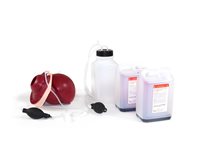
-

Cervical Dilatation & Effacement Module (CD&E) - PROMPT Flex (Light Skin Tone)
Product No. 80102
Learn more -

-
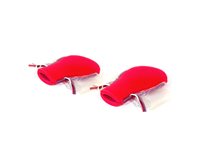
-
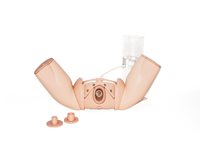
-
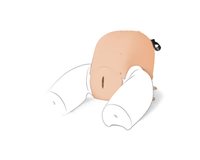
Enhanced Caesarean Section Module (ECSM) - PROMPT Flex (Light Skin Tone)
Product No. 80300
Learn more -
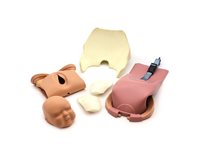
References
Family Medicine
AAFP Residency Guidelines, Maternity Care (p.9): Shoulder dystocia: understand risk factors, prevention, recognition, and management using ALSO protocols; Assisted deliveries: understand indications for and appropriate use and application of a vacuum extractor; understand indications for forceps
Paramedic
Obstetric Training
PLEASE NOTE:
The PROMPT Flex software may not be compatible on some Android devices.
For instructions on how to install PROMPT Flex on MacOS, click here.
The PROMPT birthing simulators are listed as being modular in design, what does this mean?
Standard and Advanced birthing simulators comprise of a Birthing Mother and Baby model. The Limbs & Things PROMPT Flex range has several additional modules that can be used in combination with the birth simulator base.
- Lower Legs – articulated at the knee, these offer increased realism when used with the birthing mother
- Enhanced Cesarean Section module – suitable for the practice of routine and complex c-sections
- Postpartum Hemorrhage module – give training in the management of postpartum bleeding
- Cervical Dilation & Effacement module – develop assessment and management skills required during latent and active first stages of labor
- Compression Suture Uterus – additional module for practicing common types of compression sutures and ligating the uterine artery
- PPH Kit – this kit includes the postpartum hemorrhage module and compression suture uterus module for postpartum bleeding and compression suture and ligating of the uterine artery
- Cervical Cerclage module – practice of elective or emergency cerclage to prevent pre-term birth
What does this childbirth simulator offer to medical students?
As part of a birth simulation, trainees will get hands-on experience with our realistic labor simulator. Simulated births offer the chance to develop their communication and teamwork skills, as well as practice fundamental skills required during labour.
Will using the PROMPT Flex Birthing Simulator during training improve neonatal outcomes?
A retrospective study undertaken by Southmead Hospital, UK, showed that after the introduction of simulation training there was improvement seen in the management and outcomes of births complicated by shoulder dystocia. See the skills tab for more information on the study: Improving Neonatal Outcome Through Practical Shoulder Dystocia Training.



